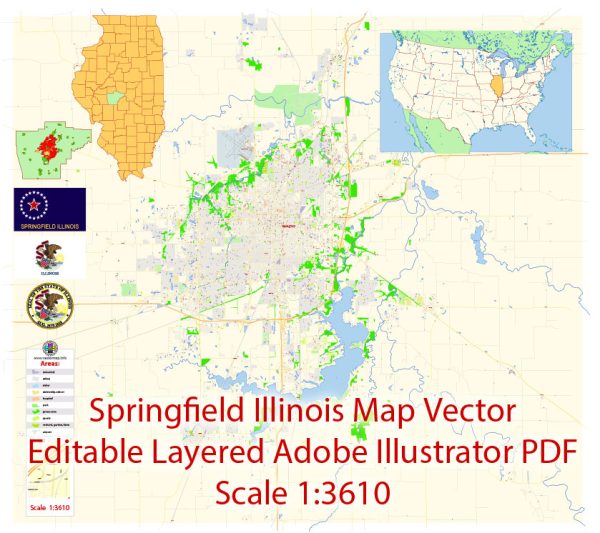Springfield, the capital city of Illinois, has a rich history of urban development that reflects the broader trends in American history. Here’s an overview of Springfield’s urban development:
- Early Settlement and Growth (1819-1860):
- Springfield was settled in the early 19th century, officially becoming the state capital of Illinois in 1837.
- The city’s location was strategic, situated near several major transportation routes, including the Sangamon River.
- During this period, Springfield experienced steady growth as it became a center for government, commerce, and agriculture in central Illinois.
- Abraham Lincoln, who would later become the 16th President of the United States, played a significant role in Springfield’s early development as a lawyer and politician.
- Civil War Era and Lincoln’s Home (1861-1865):
- The Civil War had a profound impact on Springfield, as many of its residents played active roles in the conflict.
- Abraham Lincoln’s home, now preserved as the Lincoln Home National Historic Site, is a key attraction that draws visitors interested in both the city’s and the nation’s history.
- Post-Civil War Industrialization (1865-1900):
- Springfield experienced economic growth and industrialization in the late 19th century.
- The expansion of railroads and industry contributed to the city’s development.
- The State Capitol building, constructed during this period, stands as a testament to the city’s commitment to civic architecture.
- 20th Century Growth and Challenges (1900-1950):
- Springfield continued to grow in the early 20th century, with a rise in population and the establishment of institutions such as hospitals and schools.
- However, like many American cities, Springfield faced challenges during the Great Depression, leading to economic difficulties.
- The mid-20th century saw suburbanization trends, impacting the city’s demographics and development patterns.
- Late 20th Century and Contemporary Period (1950-Present):
- Urban renewal efforts in the mid-20th century aimed to revitalize certain areas but also led to the demolition of historic structures.
- In recent decades, there has been a renewed interest in preserving Springfield’s historic architecture and revitalizing its downtown area.
- The city has sought to balance economic development with the preservation of its rich historical heritage.
- Cultural and Tourist Attractions:
- Beyond its political significance, Springfield boasts various cultural and tourist attractions, including the Abraham Lincoln Presidential Library and Museum, the Old State Capitol, and the Dana-Thomas House designed by architect Frank Lloyd Wright.
- Modern Challenges and Developments:
- Like many cities, Springfield faces modern challenges related to infrastructure, economic development, and urban planning.
- Efforts to promote sustainable development, enhance public spaces, and address issues of inequality are ongoing.
Understanding Springfield’s history of urban development provides insights into the broader currents of American history, reflecting the challenges and opportunities faced by cities across the nation.


 Author: Kirill Shrayber, Ph.D.
Author: Kirill Shrayber, Ph.D.